German Army F. W. Höller-made Officer’s Dagger
CATEGORY: Version
SKU: 20.GOR.04.01.06.001.000
Estimated market value:
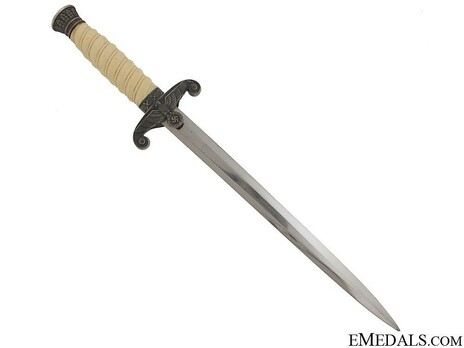
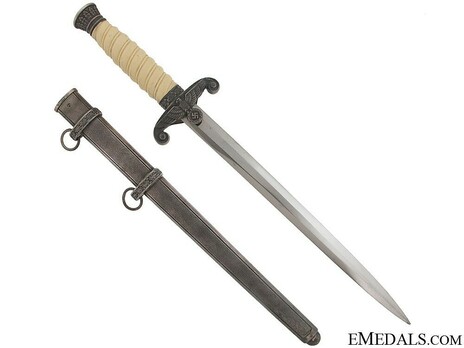
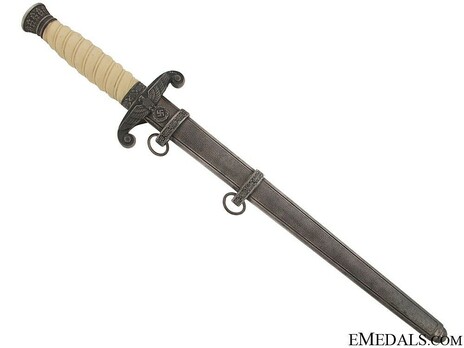
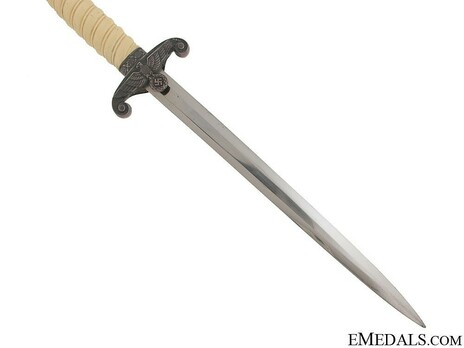
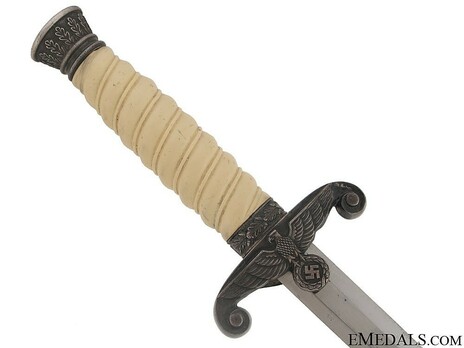
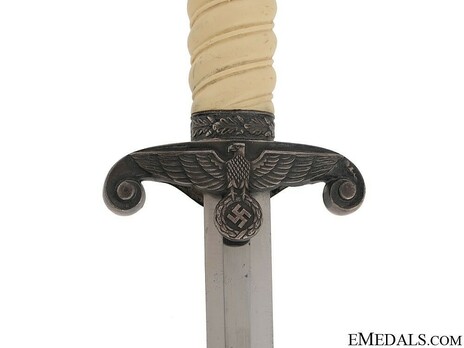
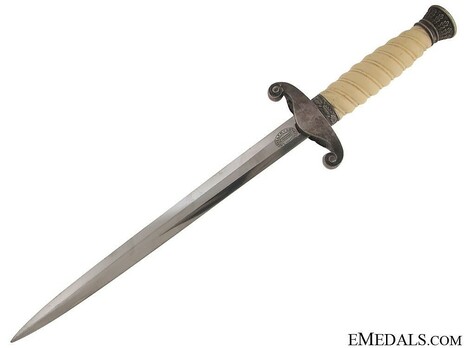
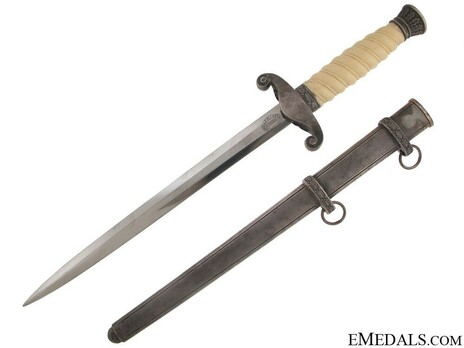
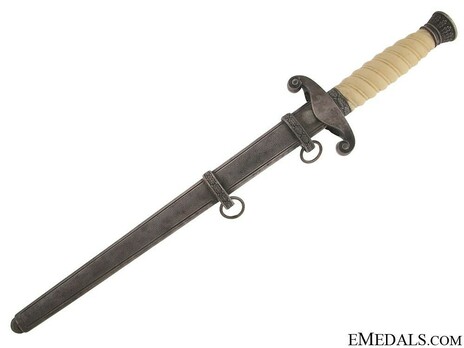
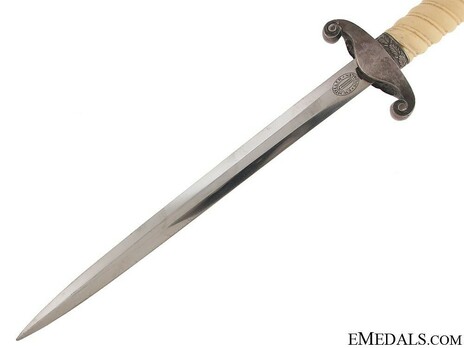
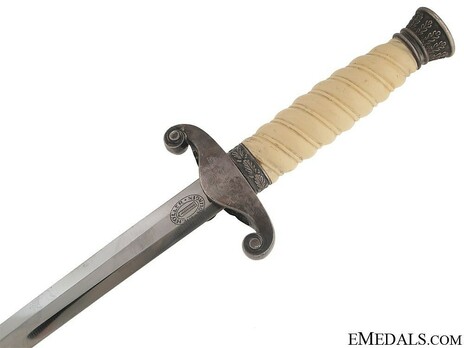
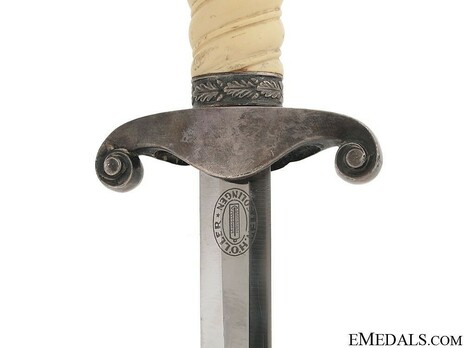
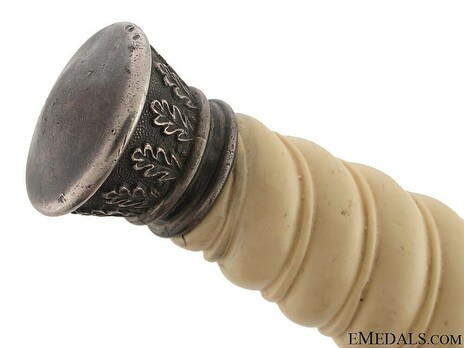
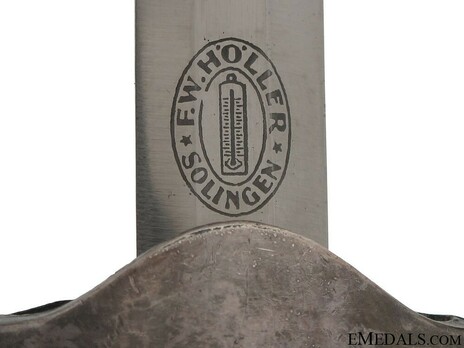
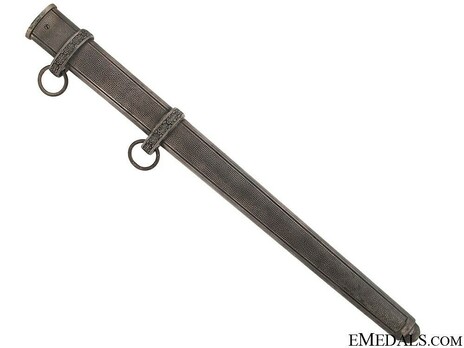
Estimated market value:
The dagger features a roughly 25.5cm long, drop forged, steel construction, nickel/silver plated, stiletto style blade with a flat central ridge and a full length, including the hilt, of roughly 37 cm. The blade is in overall good condition - and although it shows evidence of contact on the tip, it only shows light scabbard runner marks while the temper is clearly visiable. Maker marked to Höller. The logo consists of a dual lined, vertically oval cartouche with the manufacturer’s name and location, "F. W. Höller Solingen", encompassing a vertical thermometer. The original leather washer is still intact. The dagger has a cast alloy, nickel/silver plated, crossguard, ferrule and pommel all intact. The obverse crossguard features the embossed, army style national eagle with outstretched wings, clutching a wreathed, canted swastika in it’s talons and a plain reverse. The ferrule and pommel both feature embossed repeating oak-leaf patterns. The dagger has a molded celluloid grip with diagonally angled ribbing. The dagger comes with its original, tooled, magnetic sheet metal construction, nickel/silver plated scabbard with a random pebbled pattern to both the obverse and reverse and smooth side panels.
The dagger for officers of the army was officially approved by Hitler and established on May 4, 1935. It could be worn by all officers in lieu of the bayonet or sword. This included all officers up to and including field marshals, as well as medical and veterinary officers, officials of equivalent ranks to officers, and selected NCOs.
The dagger with scabbard is about 40 cm long. The blade’s length is between 25 and 27 cm. Blades were often cross-grained polished. Rare examples are nickel-plated.
All metal fittings were silver plated in the beginning, but with the progression of the war the materials used were progressively cheaper and of lower quality, for example a natural aluminum finish.
The colour of the grip varies, ranging from white to dark orange. This is due to differences in materials and productions and was not used as a way to distinguish between ranks. It has a clockwise carved groove. Initially the grips were made of solid plastic, but around the time the war began this was changed to a plastic coating on a plaster filled and wooden base. Ivory or amber glass grip versions, among other materials, could have been ordered if the buyer was willing to pay the extra cost. Other custom-made versions included etched blades, damascus blades, and engraved crossguards.
Early cross guards and pommels were made of silver-plated brass. This later changed to nickel or an alloy with a silver or nickel plating. The cross guard shows a national eagle emblem, and the pommel a ring of oak leaves. The pommel is screwed onto the grip.
The scabbard was initially made of brass with a silver finish, but after 1936 this was changed to steel with a silver or nickel pebbled finish. Late daggers have a dull grey oxide finish. The scabbard has two hanger suspension rings with oak leaves.
The dagger was to be worn with a 42 cm silver portepee. Other colours, including gold have been observed, but they are very rare. It was worn on a double-strap hanger with white metal fittings, although general officer ranks were authorized to have gold-coloured metal fittings.
The wearing of the dagger was forbidden after September 5, 1944. The main reason for this was the fact that at this late stage of the war it was simply too dangerous for soldiers to wear a dagger instead of a gun at all times.

Comments
Sign in to comment and reply.


Scroll Top